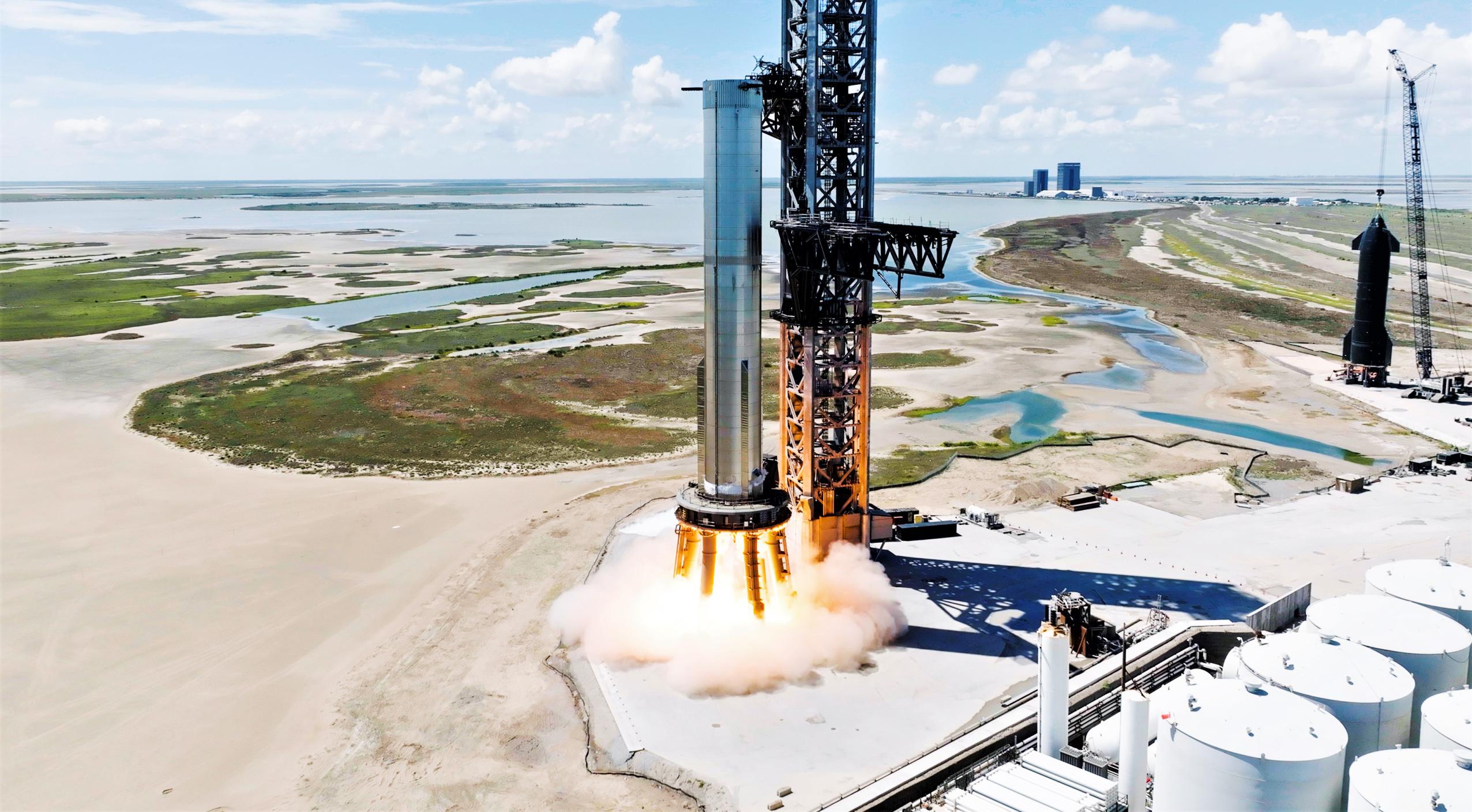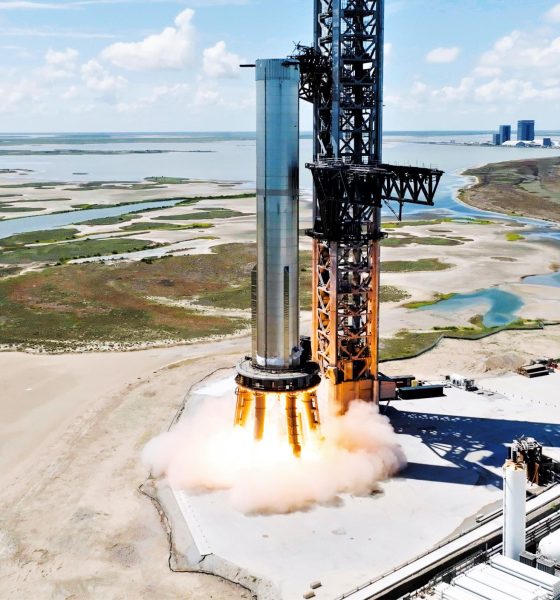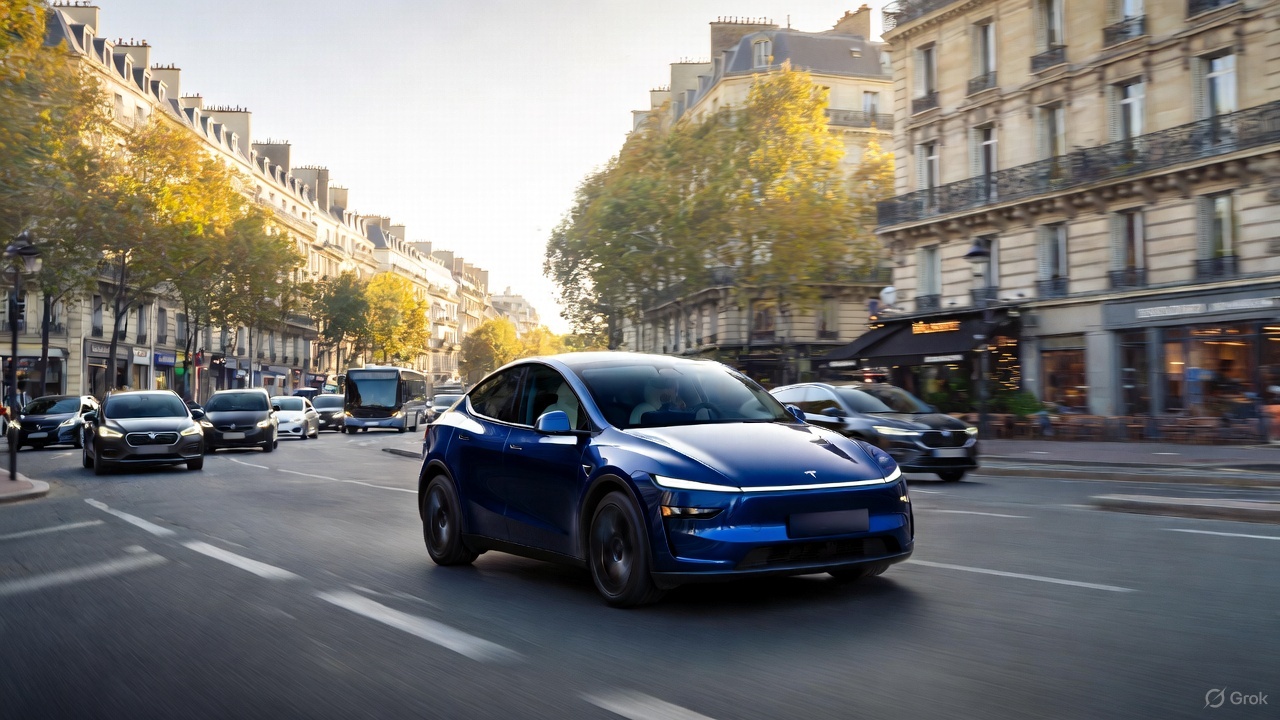

News
SpaceX breaks Starship test record, rolls next booster to launch pad
SpaceX has completed a record-breaking test of a Starship booster and rolled a newer Super Heavy prototype to the launch pad just hours apart.
Almost six weeks after SpaceX began Super Heavy Booster 7’s static fire test campaign, the company has broken new ground by simultaneously igniting seven Raptor engines at once. A matter of hours later, confirming SpaceX CEO Elon Musk’s plans in real time, the company transported a second Super Heavy prototype (Booster 8) from the factory to the launch pad, where it joined Booster 7.
According to Musk, those rockets will soon switch places, ensuring that no time is wasted while SpaceX continues to gradually work towards Starship’s first orbital launch attempts.
Booster 7 kicked off the most important stage of its flight qualification process on August 9th and 11th with two back-to-back static fires, each igniting just one of 20 installed Raptor engines. Both appeared to be successful and SpaceX returned B7 to its Boca Chica, Texas factory, reinstalled a full set of 33 engines, and sent the Super Heavy back to the launch pad two weeks later.
On August 31st, SpaceX attempted to ignite three of Booster 7’s 33 Raptors. One engine failed to ignite but the others did not, resulting in a mostly successful two-engine test. Over the next two weeks, SpaceX performed several ignition-free ‘spin-prime’ tests, two of which appeared to spin up all 33 engines without causing an explosion. Finally, SpaceX telegraphed its next major goal with a seven-engine spin-prime test on September 16th and another (albeit with a slightly different set of engines) on September 19th.
Shortly after the second seven-engine spin-prime, SpaceX refilled Booster 7 with propellant, went back through the same procedures, and ignited the same seven engines for about five seconds. No obvious issues arose and Musk later implied that the test went well. It set a new record for the largest number of Raptors simultaneously ignited on a single prototype and likely also broke the record for most thrust produced by a vehicle tested at Starbase.
If all seven upgraded Raptor V2 engines were operating at full throttle, they could have briefly produced more than 1600 tons (~3.6M lbf) of thrust – roughly equivalent to two Falcon 9 boosters. Measuring about 69 meters (~225 ft) tall and 9 meters (~30 ft) wide, Super Heavy will be the most powerful liquid rocket booster ever tested once it ignites as few as 20 of its 33 engines at full thrust.
In an increasingly rare update, Musk revealed that SpaceX will once again return Booster 7 to Starbase’s factory for mysterious “robustness upgrades” after the latest round of testing. Musk doesn’t seem to think that those upgrades will take very long, and anticipates that Starbase’s “next big test” will be the first complete wet dress rehearsal of a fully-assembled two-stage Starship, followed by Super Heavy’s first 33-engine static fire test, “in a few weeks.”
More likely than not, each step of that process will take multiple attempts and uncover issues that will then need to be corrected and verified over the course of several months. But with Starship 24 having already completed a full six-engine static fire, there’s a small chance SpaceX will find itself with a fully-stacked Starship that is more or less ready for its first orbital launch attempt by the end of October.
In the meantime, after Booster 7 returns to the factory, Booster 8 – finally complete after a relatively slow six-month assembly – will kick off basic proof testing at SpaceX’s South Texas orbital launch site. SpaceX wasted no time preparing for that swap and transported Booster 8 to the pad just seven hours after Booster 7’s seven-engine static fire. If things move more smoothly than they did with B7, it’s possible that B8 will complete proof testing and be ready to head back to the factory for Raptor installation by the time B7’s upgrades are finished – a very efficient transition if it works out that way.

News
Man credits Grok AI with saving his life after ER missed near-ruptured appendix
The AI flagged some of the man’s symptoms and urged him to return to the ER immediately and demand a CT scan.

A 49-year-old man has stated that xAI’s Grok ended up saving his life when the large language model identified a near-ruptured appendix that his first ER visit dismissed as acid reflux.
After being sent home from the ER, the man asked Grok to analyze his symptoms. The AI flagged some of the man’s symptoms and urged him to return immediately and demand a CT scan. The scan confirmed that something far worse than acid reflux was indeed going on.
Grok spotted what a doctor missed
In a post on Reddit, u/Tykjen noted that for 24 hours straight, he had a constant “razor-blade-level” abdominal pain that forced him into a fetal position. He had no fever or visible signs. He went to the ER, where a doctor pressed his soft belly, prescribed acid blockers, and sent him home.
The acid blockers didn’t work, and the man’s pain remained intense. He then decided to open a year-long chat he had with Grok and listed every detail that he was experiencing. The AI responded quickly. “Grok immediately flagged perforated ulcer or atypical appendicitis, told me the exact red-flag pattern I was describing, and basically said “go back right now and ask for a CT,” the man wrote in his post.
He copied Grok’s reasoning, returned to the ER, and insisted on the scan. The CT scan ultimately showed an inflamed appendix on the verge of rupture. Six hours later, the appendix was out. The man said the pain has completely vanished, and he woke up laughing under anesthesia. He was discharged the next day.
How a late-night conversation with Grok got me to demand the CT scan that saved my life from a ruptured appendix (December 2025)
byu/Tykjen ingrok
AI doctors could very well be welcomed
In the replies to his Reddit post, u/Tykjen further explained that he specifically avoided telling doctors that Grok, an AI, suggested he get a CT scan. “I did not tell them on the second visit that Grok recommended the CT scan. I had to lie. I told them my sister who’s a nurse told me to ask for the scan,” the man wrote.
One commenter noted that the use of AI in medicine will likely be welcomed, stating that “If AI could take doctors’ jobs one day, I will be happy. Doctors just don’t care anymore. It’s all a paycheck.” The Redditor replied with, “Sadly yes. That is what it felt like after the first visit. And the following night could have been my last.”
Elon Musk has been very optimistic about the potential of robots like Tesla Optimus in the medical field. Provided that they are able to achieve human-level articulation in their hands, and Tesla is able to bring down their cost through mass manufacturing, the era of AI-powered medical care could very well be closer than expected.
News
Tesla expands Model 3 lineup in Europe with most affordable variant yet
The Model 3 Standard still delivers more than 300 miles of range, potentially making it an attractive option for budget-conscious buyers.

Tesla has introduced a lower-priced Model 3 variant in Europe, expanding the lineup just two months after the vehicle’s U.S. debut. The Model 3 Standard still delivers more than 300 miles (480 km) of range, potentially making it an attractive option for budget-conscious buyers.
Tesla’s pricing strategy
The Model 3 Standard arrives as Tesla contends with declining registrations in several countries across Europe, where sales have not fully offset shifting consumer preferences. Many buyers have turned to options such as Volkswagen’s ID.3 and BYD’s Atto 3, both of which have benefited from aggressive pricing.
By removing select premium finishes and features, Tesla positioned the new Model 3 Standard as an “ultra-low cost of ownership” option of its all-electric sedan. Pricing comes in at €37,970 in Germany, NOK 330,056 in Norway, and SEK 449,990 in Sweden, depending on market. This places the Model 3 Standard well below the “premium” Model 3 trim, which starts at €45,970 in Germany.
Deliveries for the Standard model are expected to begin in the first quarter of 2026, giving Tesla an entry-level foothold in a segment that’s increasingly defined by sub-€40,000 offerings.
Tesla’s affordable vehicle push
The low-cost Model 3 follows October’s launch of a similarly positioned Model Y variant, signaling a broader shift in Tesla’s product strategy. While CEO Elon Musk has moved the company toward AI-driven initiatives such as robotaxis and humanoid robots, lower-priced vehicles remain necessary to support the company’s revenue in the near term.
Reports have indicated that Tesla previously abandoned plans for an all-new $25,000 EV, with the company opting to create cheaper versions of existing platforms instead. Analysts have flagged possible cannibalization of higher-margin models, but the move aims to counter an influx of aggressively priced entrants from China and Europe, many of which sell below $30,000. With the new Model 3 Standard, Tesla is reinforcing its volume strategy in Europe’s increasingly competitive EV landscape.
News
Tesla FSD (Supervised) stuns Germany’s biggest car magazine
FSD Supervised recognized construction zones, braked early for pedestrians, and yielded politely on narrow streets.

Tesla’s upcoming FSD Supervised system, set for a European debut pending regulatory approval, is showing notably refined behavior in real-world testing, including construction zones, pedestrian detection, and lane changes, as per a recent demonstration ride in Berlin.
While the system still required driver oversight, its smooth braking, steering, and decision-making illustrated how far Tesla’s driver-assistance technology has advanced ahead of a potential 2026 rollout.
FSD’s maturity in dense city driving
During the Berlin test ride with Auto Bild, Germany’s largest automotive publication, a Tesla Model 3 running FSD handled complex traffic with minimal intervention, autonomously managing braking, acceleration, steering, and overtaking up to 140 km/h. It recognized construction zones, braked early for pedestrians, and yielded politely on narrow streets.
Only one manual override was required when the system misread a converted one-way route, an example, Tesla stated, of the continuous learning baked into its vision-based architecture.
Robin Hornig of Auto Bild summed up his experience with FSD Supervised with a glowing review of the system. As per the reporter, FSD Supervised already exceeds humans with its all-around vision. “Tesla FSD Supervised sees more than I do. It doesn’t get distracted and never gets tired. I like to think I’m a good driver, but I can’t match this system’s all-around vision. It’s at its best when both work together: my experience and the Tesla’s constant attention,” the journalist wrote.
Tesla FSD in Europe
FSD Supervised is still a driver-assistance system rather than autonomous driving. Still, Auto Bild noted that Tesla’s 360-degree camera suite, constant monitoring, and high computing power mark a sizable leap from earlier iterations. Already active in the U.S., China, and several other regions, the system is currently navigating Europe’s approval pipeline. Tesla has applied for an exemption in the Netherlands, aiming to launch the feature through a free software update as early as February 2026.
What Tesla demonstrated in Berlin mirrors capabilities already common in China and the U.S., where rival automakers have rolled out hands-free or city-navigation systems. Europe, however, remains behind due to a stricter certification environment, though Tesla is currently hard at work pushing for FSD Supervised’s approval in several countries in the region.








